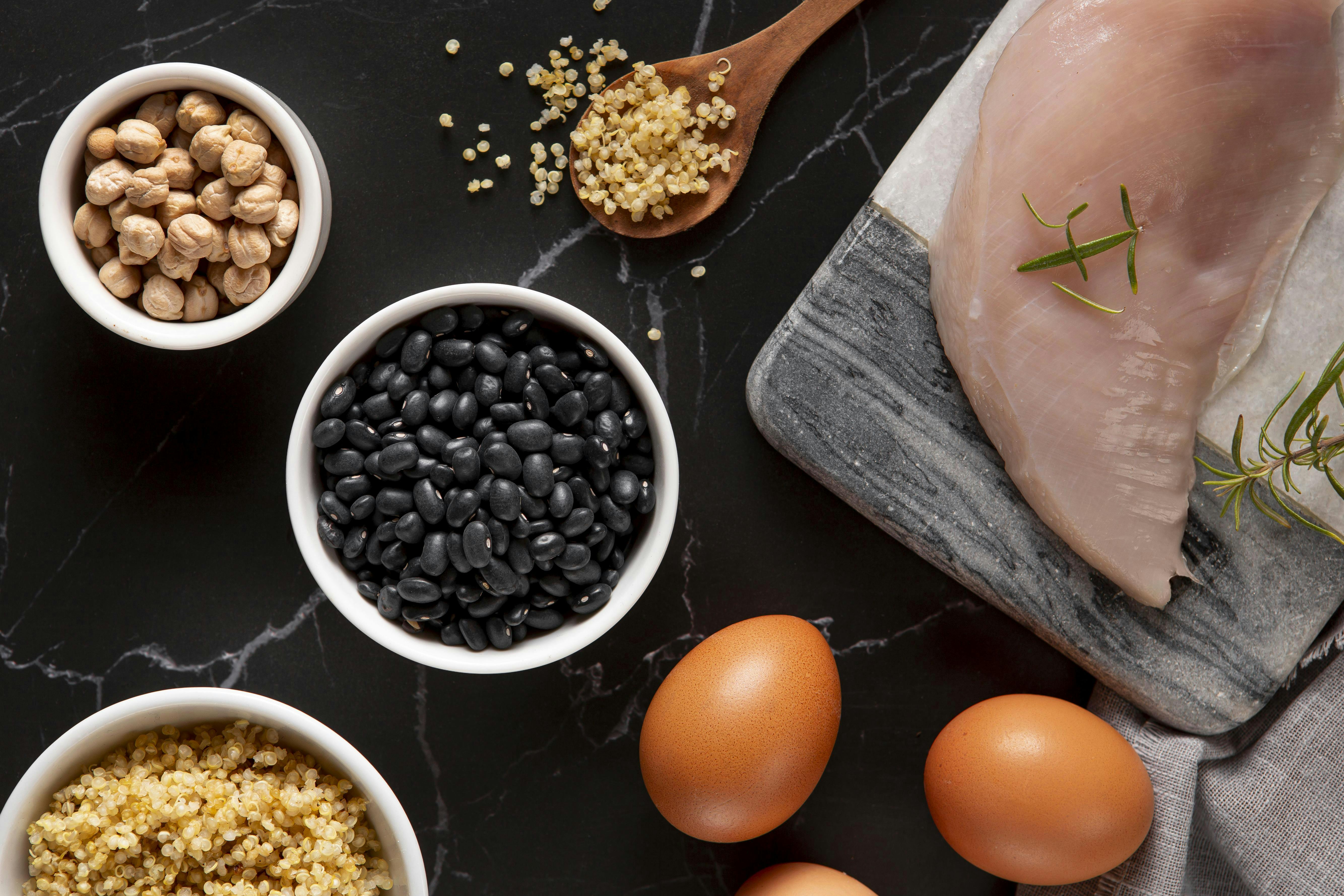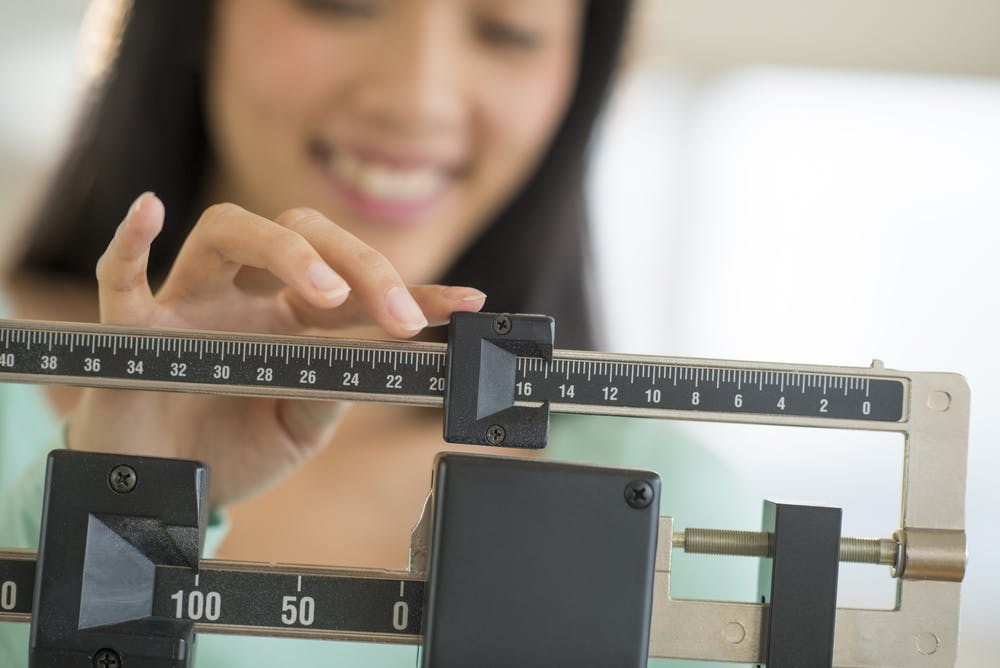- Category
- Nutrition
- DateApril 4, 2025
- AuthorMeaghan Kennedy
- Read Time15 Min
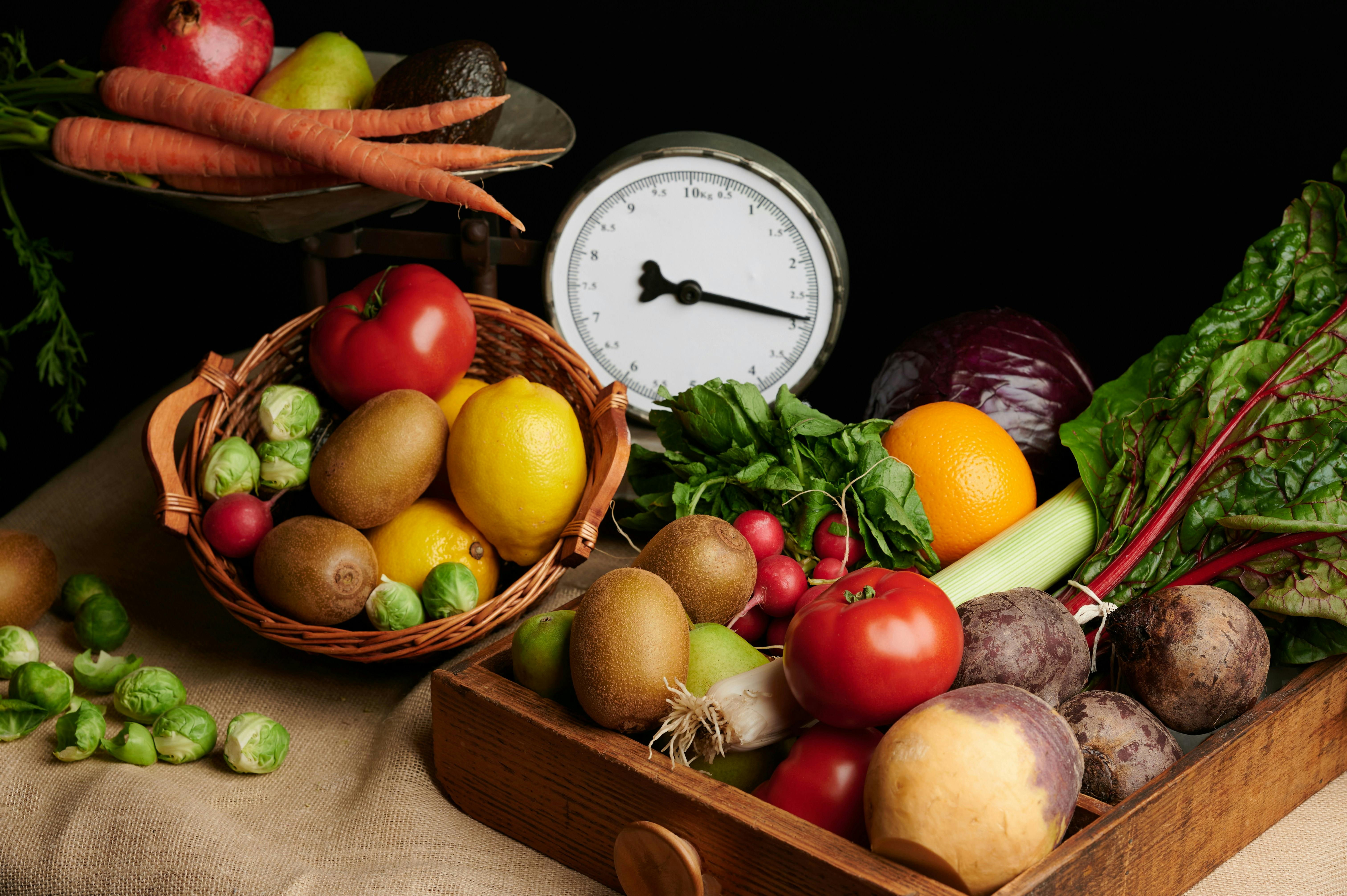
How to Determine the Right Portion Sizes for your Body
One of the most common questions I get is, “How do I know how much to eat?”
While I appreciate clients investing in meal plans, I always emphasize that following a structured plan forever isn’t sustainable. My goal is to teach people how to take control of their health, fitness, and nutrition independently.
There are two effective ways to determine portion sizes: using your hand as a guide or tracking your calorie and macronutrient intake. The latter is the preferred method among fitness professionals, as it provides the most accuracy—similar to tracking finances, it highlights areas for improvement.
From my experience working with hundreds of clients, the biggest mistakes I see are under-eating protein and fibre while over-consuming fats and refined carbs. Understanding portion sizes is the key to achieving lasting results.
What are Macro-Nutrients and Micro-Nutrients?
Before learning about portion sizes, it's important to understand what macronutrients and micronutrients are.
Macronutrients, or "macros," are nutrients that your body requires in large quantities to function optimally. They supply energy (calories) and play a vital role in growth, metabolism, and overall health. The three main macronutrients are:
- Fats: Supports cell growth, cushions organs, aids in nutrient absorption, and serves as a long-term energy reserve.
- Calories per gram: 9 kcal
- Carbohydrates: The body's primary energy source, crucial for brain function and physical activity.
- Calories per gram: 4 kcal
- Protein: Essential for tissue repair, muscle building, immune support, and hormone/enzyme production.
- Calories per gram: 4 kcal
Micronutrients
Micronutrients are essential nutrients that your body needs in small amounts to support various physiological functions. Despite their small required quantities, they play a crucial role in maintaining health and preventing deficiencies.
Vitamins
Vitamins support immunity, energy production, blood clotting, and other vital processes. They are categorized into:
- Water-Soluble Vitamins (not stored in the body, requiring regular intake):
- B-complex vitamins (B6, B12, folate, niacin, etc.)
- Vitamin C
- Fat-Soluble Vitamins (stored in fat tissues and the liver):
- Vitamins A, D, E, and K
Minerals
Minerals contribute to bone health, fluid balance, muscle function, and more. They are classified into:
- Macro Minerals (needed in larger amounts):
- Calcium, magnesium, potassium, sodium, phosphorus, etc.
- Trace Minerals (needed in tiny amounts):
- Iron, zinc, selenium, iodine, copper, etc.
Even though micronutrients are required in small doses, deficiencies or imbalances can lead to significant health problems. A diverse diet rich in fruits, vegetables, whole grains, nuts, and lean proteins helps ensure you get the necessary vitamins and minerals.
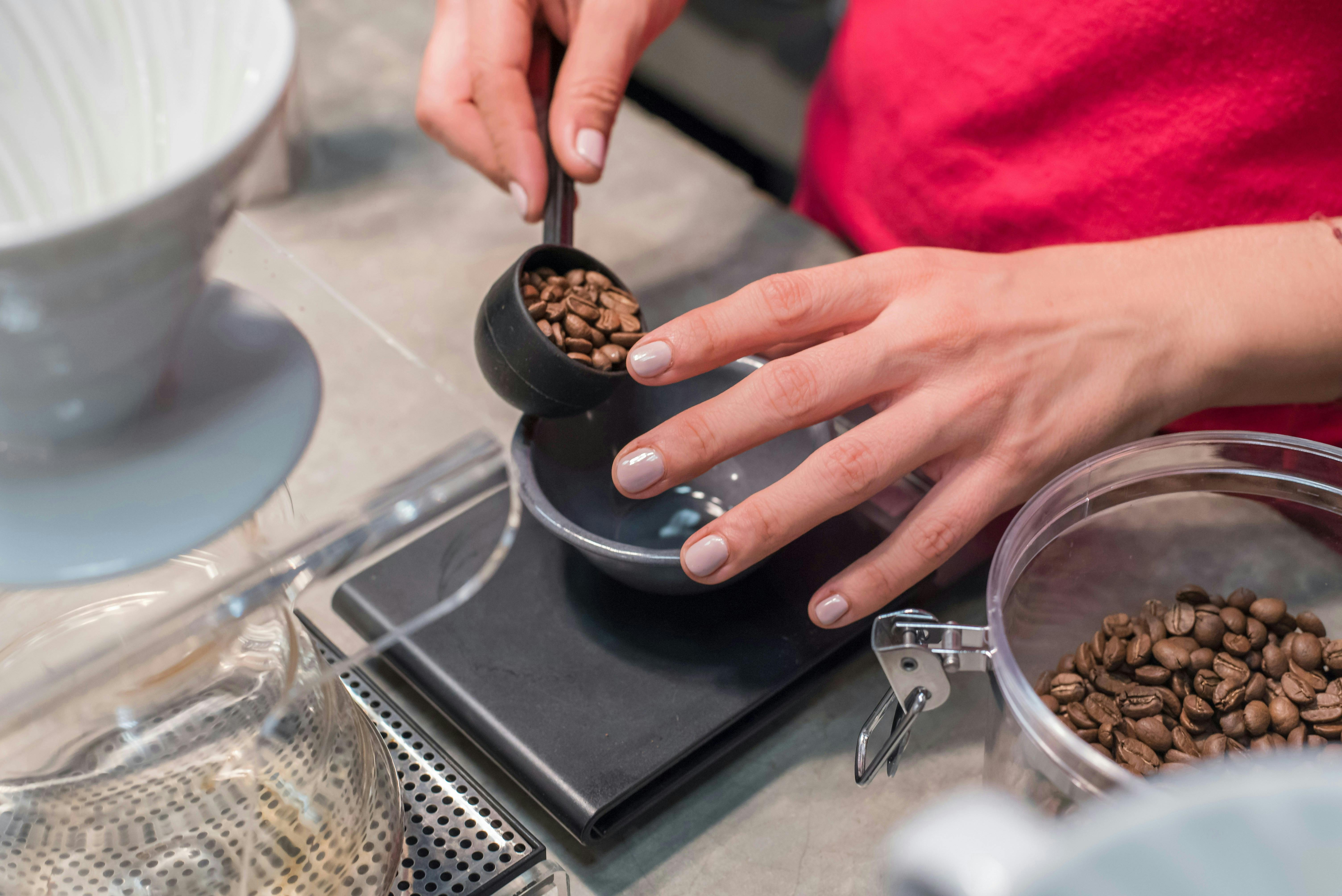
Guidance for beginners in fitness or those without strict aesthetic goals:
Let’s start with the simplest method: using your hands to gauge portion sizes after your food is cooked or prepared. We use our hands because they are proportionate to our bodies, making this an effective and personalized tool. As outlined in the Precision Nutrition guide, hand portions are meant for plating your food, not cooking it. For foods that are eaten cooked (like meat, pasta, or rice), measure portions after cooking. For foods eaten raw, measure them in their raw state.
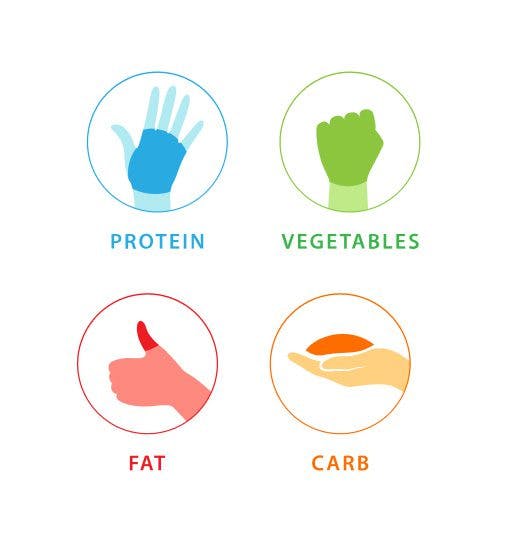
Using Your Hands as a Guide
According to the photo, portion sizes are measured as follows:
Carbohydrates → 1 cupped hand
Vegetables → 1 fist
Fats → 1 thumb
Protein → 1 palm
What About Mixed Foods?
To classify a food that falls into multiple categories, check its macronutrient composition. Identify whether fat, carbohydrates, protein, or sugar is the most dominant, and classify it accordingly.
For high-fat foods that also contain significant sugar, think of it this way:
If it’s full-fat, it counts as a thumb of fat.
If it also has a lot of sugar, it should additionally count as a cupped hand of carbs.
This approach also works for lower-nutrient foods, which are typically classified as either a carb or fat source.
Advice for people with stricter aesthetic goals and sports performance goals:
For those with stricter aesthetic or sports performance goals, I recommend using a macro and calorie tracking app like MyFitnessPal. This method is especially useful for those focused on physique-related goals, which is why many bodybuilders rely on it for tracking their food intake.
Personally, I prefer tracking macros for four main reasons:
- It allows flexibility to include less nutritious foods.
- It increases the likelihood of achieving aesthetic goals.
- It makes tracking mixed meals easier.
- Most macro-tracking apps also monitor micronutrients.
Tracking macros isn’t something you need to do forever, but it can be a valuable tool—especially if you don’t have a history of disordered eating.
For accurate results, it’s important to weigh your food rather than estimating portion sizes.
Ultimately, macro tracking is meant to be a temporary tool to help you develop a better understanding of nutrition.
How to Calculate your Daily Calorie Intake
A macro-tracking app will typically calculate your calorie and macro-nutrient needs. Here's how you can calculate your caloric intake by hand if you prefer:
Step 1: Calculate Your Basal Metabolic Rate (BMR)
Men:
BMR = 66.5 + (13.75 × weight in kg) + (5 × height in cm) − (6.75 × age in years)
Women:
BMR = 655.1 + (9.563 × weight in kg) + (1.85 × height in cm) − (4.676 × age in years)
Step 2: Adjust for Activity Level
Multiply your BMR by the activity factor that best matches your lifestyle:
- Sedentary: Little to no exercise (BMR × 1.2)
- Light activity: Light exercise/sports 1-3 days per week (BMR × 1.375)
- Moderately active: Moderate exercise/sports 3-5 days per week (BMR × 1.55)
- Very active: Intense exercise/sports 6-7 days per week (BMR × 1.725)
- Extra active: Very intense daily exercise, physical job, or training twice a day (BMR × 1.9)
This final number represents your Total Daily Energy Expenditure (TDEE)—the estimated calories needed to maintain your current weight.
What if I want to lose fat?
To lose fat, you need to be in a caloric deficit. I typically start my clients with a mild deficit or at maintenance calories for the first 2-4 weeks. This phase helps build essential habits, such as tracking macros and calories, and adjusting to a diet higher in fiber and protein, both of which are very filling.
For a mild deficit, I usually reduce calories by 200-300 per day. After 2-4 weeks, if needed, I gradually increase the deficit to a maximum of 500 calories per day.
Fat Loss Timeline
A caloric deficit should last 8-12 weeks for optimal fat loss. I do not recommend staying in a deficit beyond 12 weeks, even if you haven’t reached your goal. Prolonged deficits can lead to muscle loss and metabolic adaptation. *It is crucial to hit your recommend daily protein intake while in a deficit, as protein is essential to preserve muscle mass.
Taking a break from the Deficit
After 8-12 weeks, take a 1-2 week break at maintenance calories to allow your body and mind to recover. Continue with the deficit if you feel you need to lose more weight.
Reverse Dieting & Maintaining Results
Once you achieve your fat-loss goal, slowly increase calories by 50-100 daily until you reach maintenance—a process called reverse dieting—to help maintain your results sustainably.
In Conclusion
Learning to track your portion sizes is a valuable skill that can help you reach your health and fitness goals. Whether you use hand portions for a simple and flexible approach or a macro and calorie tracking app for more precision, the key is finding a method that fits your lifestyle. Over time, tracking can help you build awareness of portion sizes and make mindful food choices without feeling restricted. Remember, the goal isn’t perfection—it’s consistency. With practice, portion control will become second nature, allowing you to maintain a balanced diet effortlessly.
References
- Nutrium. "Harris-Benedict Equation Calculator for Nutrition Professionals." Nutrium Blog, https://nutrium.com/blog/harris-benedict-equation-calculator-for-nutrition-professionals/. Accessed 4 Apr. 2025.
- Precision Nutrition. "Hand Portion FAQ." Precision Nutrition, https://www.precisionnutrition.com/hand-portion-faq. Accessed 4 Apr. 2025.
You may also like
Protein is essential for muscle growth, recovery, and overall health, yet many people don’t get enough. This no-BS guide cuts through the noise, giving you practical ways to increase your intake with real, high-protein foods—each delivering over 10g per serving. No gimmicks, no supplements—just simple, effective strategies to help you hit your protein goals with ease.
Fat loss is a journey, and it's important to know how to lose fat the right way. We all want to look good and feel great, but if you're trying to do it by starving yourself or working out for hours every day, you might be hurting your body more than helping it. In this article, I discuss six different ways you can lose weight healthily and sustainably.
Metabolism is a critical component of weight management, and it slows down as you age. But that doesn't mean you're doomed to gain weight as time passes—plenty of ways to speed up your metabolism once you're over thirty. This article has compiled my top five ways to boost your metabolism.
